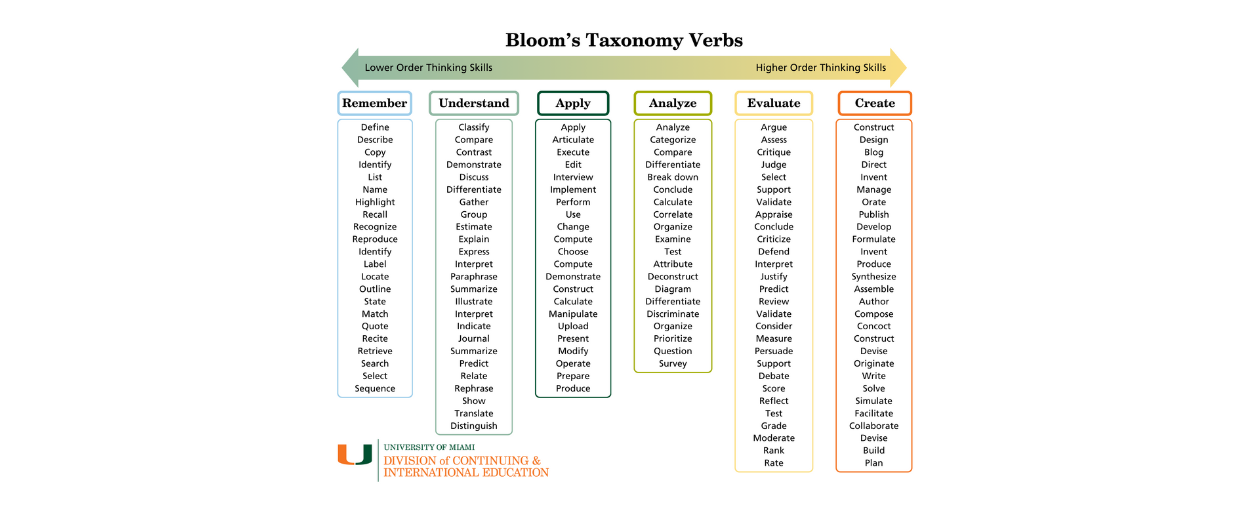Once we’ve identified our desired results, we can move to the next step: determining acceptable evidence. This evidence is usually an assignment, project, or assessment. It lets the instructor determine whether the student is on the right track by evaluating their submission. The key to a highly effective course is ensuring that we’ll have a way to assess whether students have indeed met each of the learning goals.
The type of evidence you’ll use depends on the level of learning outcome. For example, when looking to determine whether a student has met the “remember,” “understand,” or even “apply” levels of knowledge, activities such as a well-designed quiz or discussion board will often work effectively. However, a more in-depth assignment or project is likely needed to assess the student’s ability to “analyze,” “evaluate,” or “create.”
As you’re determining the acceptable evidence, be sure to think about how you’ll evaluate students’ work. We’re big proponents of using rubrics to provide an objective grade and feedback that students will be able to understand and put into action. Rubrics are also helpful as the instructor to more definitively know whether the student has gained mastery of the learning objective.




